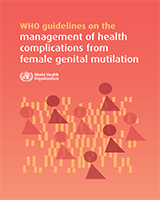Each recommendation contained in these guidelines encompasses a direction (in favour or against) and, as discussed in this annex, the degree of strength: strong or conditional.
The Guideline Development Group (GDG) used the following different categories for the strength of a recommendation:1
Strong recommendations mean the GDG is confident that the desirable effects of adherence to a recommendation outweigh the undesirable effects.
Conditional recommendations mean the GDG concludes that the desirable effects of adherence to a recommendation probably outweigh the undesirable effects, but is not confident of that conclusion.
Implications of a strong recommendation
For clients – Most people in this situation would want the recommended course of action and only a small proportion would not.
For clinicians – Most clients should receive the recommended course of action.
For policy-makers – The recommendation can be adopted as a policy in most situations.
Implications of a conditional recommendation
For clients – Most people in this situation would want the recommended course of action, but many would not.
For clinicians – Different choices will be appropriate for different clients, who will require assistance in arriving at a management decision consistent with their values and preferences.
For policy-makers – Policy-making will require substantial debate and involvement of many stakeholders.

